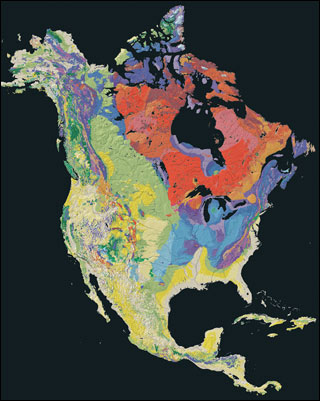
The North America Tapestry of Time and Terrain. This map is a portrait of the land surface of North America and the ages of its underlying rock formations. This digital tapestry outlines the geologic story of continental collision and break-up, mountain-building, river erosion and deposition, ice-cap glaciation, volcanism, and other events and processes that have shaped the region over the last 2.6 billion years. (Image and text courtesy of the U.S. Geological Survey.)
Instructor(s)
Prof. Taylor Perron
Prof. Oliver Jagoutz
MIT Course Number
12.001
As Taught In
Fall 2013
Level
Undergraduate
Course Description
Course Features
Course Description
Geology is the core discipline of the earth sciences and encompasses many different phenomena, including plate tectonics and mountain building, volcanoes and earthquakes, and the long-term evolution of Earth’s atmosphere, surface and life. Because of the ever-increasing demand for resources, the growing exposure to natural hazards, and the changing climate, geology is of considerable societal relevance. This course introduces students to the basics of geology. Through a combination of lectures, labs, and field observations, we will address topics ranging from mineral and rock identification to the origin of the continents, from geologic mapping to plate tectonics, and from erosion by rivers and glaciers to the history of life.
Other Versions
Other OCW Versions
Archived versions: ![]()


